You eat soba either hot in a bowl, perhaps with deep-fried vegetables or other toppings; or cold, dipped in a cup of salty sauce and slurped. Soba was first made only with buckwheat so they fell apart very easily (buckwheat doesn't have gluten). Because of that they were steamed rather than boiled, and often served right out of the bamboo steam tray, called "zaru". Nowadays the buckwheat is mixed with some wheat and boiled, but cold soba - "zarusoba" - is still traditionally served on a bamboo tray.
Last winter we made homemade soba. I was completely convinced that I posted a blog entry about this at the time, but as it turns out I never did (or I just can't find it). Better late than never.
When you eat it at home you normally just buy a pack of dried or fresh soba. But it's fun to try to make things yourself, and if you're not living in Japan dried soba can be difficult to find, so it's well worth taking a shot at making it by hand. The original soba used only buckwheat (there's still restaurants serving that). Today you usually use a mix of two parts wheat to eight parts buckwheat; the wheat gluten helps hold the noodles together and lightens the taste a bit. Below I'll be using equal parts buckwheat and wheat, a common mix, and easier to work with.
The ingredients: Buckwheat flour, wheat flour, potato starch (actually "katakuriko", dogtooth starch, but potato starch works the same) and water. We'll need a rolling pin and a bowl too. I used equal parts buckwheat and wheat; for a bit more authentic noodle you should use 8:2 but that's a bit harder to work. Water is about half the flour by weight.
First, mix the buckwheat and wheat flour together. Make a dent in the center of the flour mix and pour in some water. Mix it well together; it should become a fairly dry ball of dough. A rule of thumb is that the dough should feel like pinching an earlobe.
Work the dough very well, by repeated folding and stretching. Here is where I made a major mistake: I worked the dough only for about five-ten minutes, like I do when baking bread. You should work it longer. Shape the dough into a smooth ball with no air pockets.
The reason you work dough is for the gluten in the flour to attach to itself and start forming long protein chains, and those chains are what holds the whole thing together. But with a dough that is only part wheat the gluten proteins has a harder time finding copies to attach to. Also, a wet, loose dough lets the molecules slip around and move about quite easily but in a dry dough like this it is much more difficult for them to move around and attach to each other.
A wheat-only dough or a really wet dough does not need to be worked much. But a dough like this needs to be worked a lot, much more than the few minutes I gave it. There is in fact a long sequence of steps for working soba dough, and if you follow those steps you will have worked the dough enough at the end.
Roll out the dough with the rolling pin, using the katakuriko (or potato flour) to avoid it sticking. First make a large round sheet, then you make it square by repeatedly rolling up the dough on the rolling pin, roll it out, then repeat at a 90 degree angle. Sprinkle katakuriko (or potato starch) to avoid sticking. However you do, you should have a square or rectangular sheet in the end.
Fold the sheet into thirds, with plenty of katakuriko to avoid any sticking. Put the dough on a cutting board.
Use the largest knife you have to gently cut the dough into thin, thin strips. This is not that easy. Ideally you should have a special sliding board on top to guide you and a huge, cleaver-like soba-knife to cut the noodles. Just using a large, sharp kitchen knife works though.
Fluff up the noodles a bit to make them separate properly and get rid of excess starch. Boil up water, then boil the soba for 1.5 minutes or so. Immediately dunk them in cold water to stop them cooking further. As I didn't work the soba enough previously, our noodles tended to fall apart as they cooked, giving us short, stumpy noodles rather than the long ones we're supposed to have.


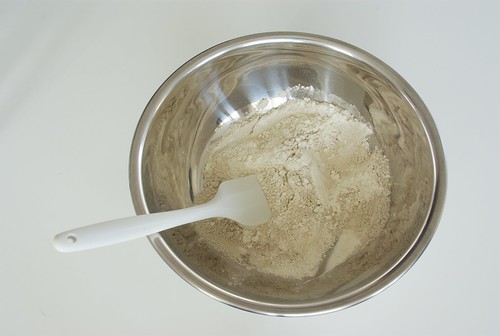

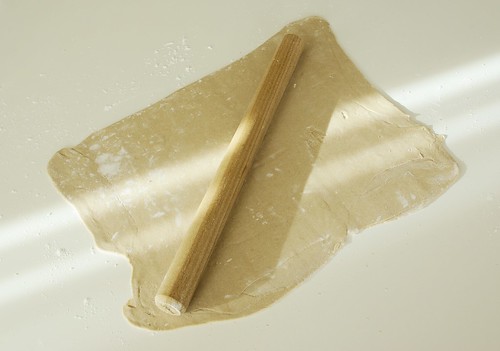
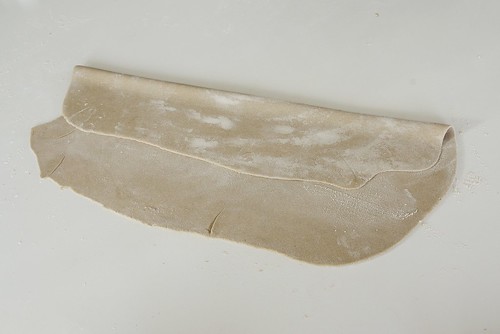
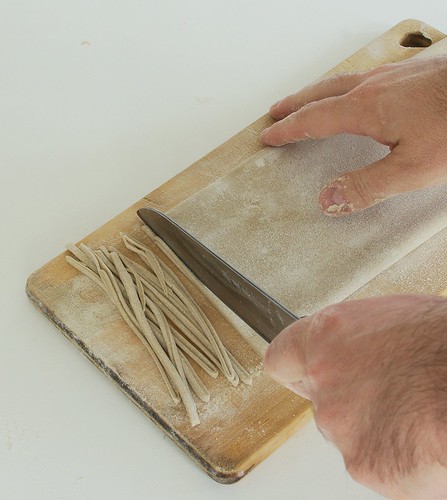
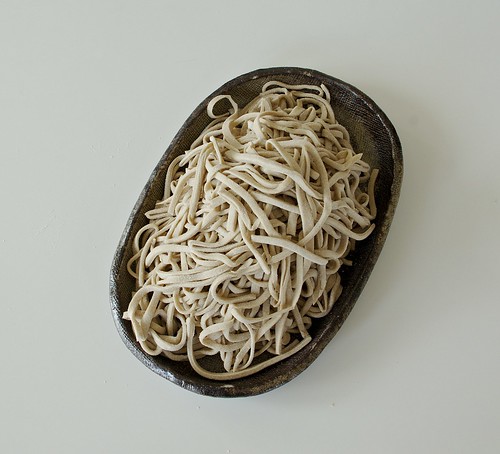
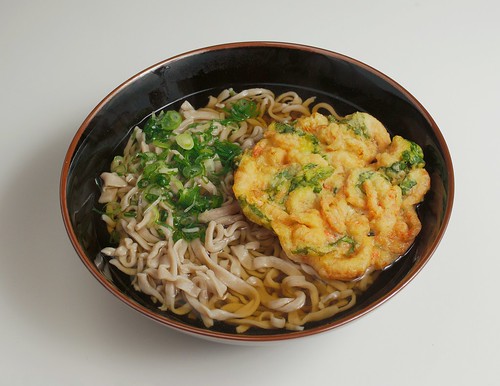
Oh, "zarusoba" I miss it very much.
ReplyDeleteI'm allergic to gluten, is there some other flour that would have the same effect as the glutenous grains? I have plenty of buckwheat here, and I was also wondering if I should roast it or not before grinding it into flour?
ReplyDeleteI have no idea how buckwheat flour is prepared so I can't help you there (though my guess is it's ground as-is, not roasted or anything).
ReplyDeleteAs for gluten, soba was originally made without any other grain, just buckwheat. There's apparently restaurants around that still make it that way too. The problem is that without gluten the noodles don't stay together when boiling them. So what you do in that case is to steam them instead. Traditionally it's done in a wide bamboo tray (that's why zarusoba is served in such a tray), but I would guess any way to steam them would work just fine.
It's more tricky to get right in other words, but on the other hand you'll be making original old-style soba. If you do try it, please let me know how it went!
Lazy version:
ReplyDeletePut buckwheat, wheat flour, or gluten (as per on package), or both (playing with proportions is the trick, since different places, different products, different water) in food processor.
Start machine, let everything mix properly in there, then add lukewarm water 'till dough as described in recipe.
From here, you either suffer with the rolling pin method, or flatten the dough like 6-8 times in the lasagna roller of basic italian manual pasta machine, then cut it with the cutting side, shape your choice.
Takes me 20 mn for a pound of fresh stuff, from start to kitchen in original state.
Hi! I just made some soba (1/2 buckwheat, 1/2 wheat) as per your directions. However, when I boiled it, the noodles themselves were very chewy... do you have any idea why?
ReplyDeleteThanks for the recipe, by the way! It was easy to follow.
I have no idea, really. The chewiness is influenced a lot by how much you knead them. I kneaded too little and they sort of fell apart; you overdid it a little, perhaps?
ReplyDeleteI kneaded it for about 15 minutes, but it might have been too much. I'll go a little easier next time. Thanks for the tip!
ReplyDelete